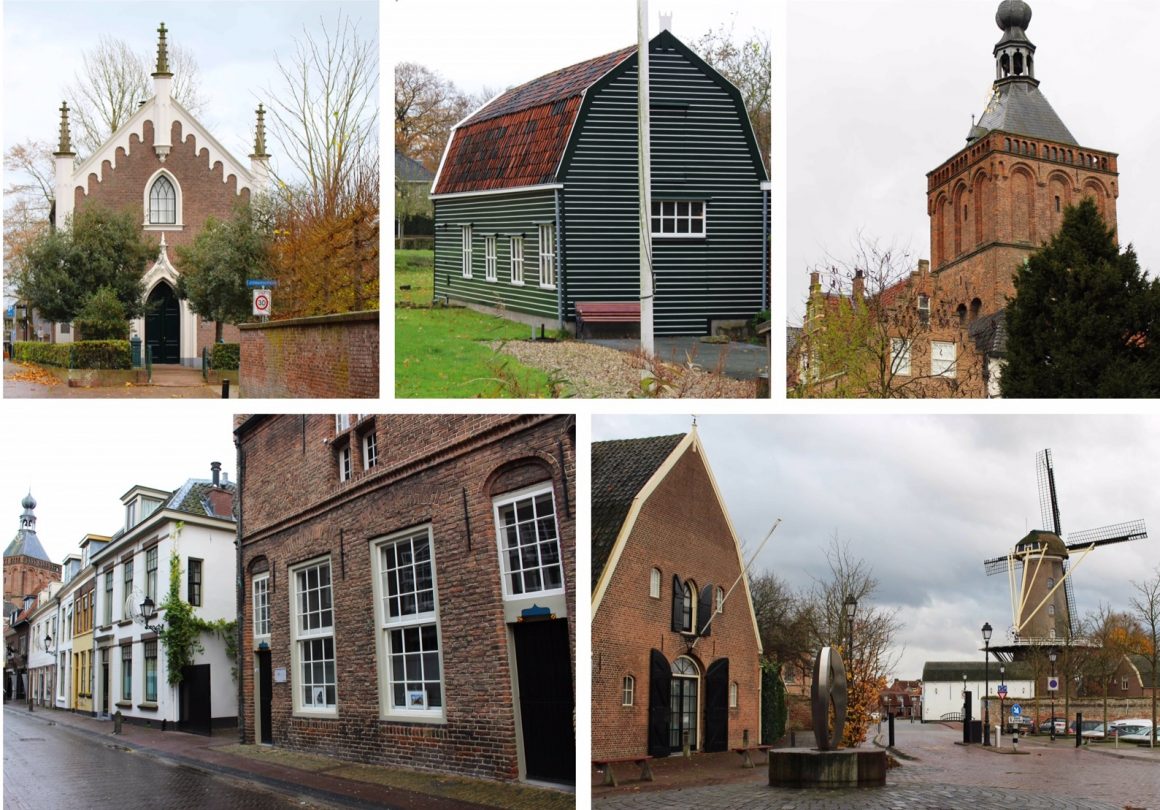Just across the border of the Dutch province of Utrecht at the other side of the river Lek there is a little town called Culemborg. This is a medieval fortified city in the western corner of the province of Gelderland. This is the biggest province in the Netherlands and still, it is not that well-known by tourists. Sure, we all know about the forest-rich hills of the ‘Veluwe’, but this area has more to offer. Let the city of Culemborg be a good example of this.
Culemborg is an old city with a history that goes back to the thirteenth century. It was a rich merchant town with many lively farm markets. Culemborg was also a wayward city. With the fourteenth century title ‘Vrijstad’ (free city) it was independent with its own set of laws and rules. It was not part of the Republic of the Seven United Netherlands Republics. This independent status attracted not only merchants, but also poor people with debt who tried to escape. The medieval expression ‘Going to Culemborg’ meant going bankrupt and disappearing for a while. No worries, my visit to Culemborg did not have anything to do with my finances. I was invited by the ‘Gelderse Streken’ to visit historical Culemborg for a short day trip. In this article I will share with you my tips for this Guelder city.
See: monumental Culemborg
Did you know that Culemborg has more than a hundred monuments protected by the national government? Time to discover this with a walk around the historical center. Start with the fourteenth century city gate ‘Lanxmeerpoort’. Culemborg used to have seven city gates, but this is the only one left. On top of this gate you see the ‘Papklok’ (a clock work named after the dish of porridge). Every evening, the bells start tolling at 21.50 pm announcing that the gate will close at 22.00 hours. If you are wondering why this clock is named after porridge, it is because the people of Culemborg liked to eat warm porridge late in the evening right before going to bed.


From the ‘Lanxmeerpoort’ you walk across sixteenth century town hall at the ‘Oude Vismarkt (old fish market) to the picturesque ‘Pietergasthuis’ (Peter Guest House), easily recognized by the brown step-roof. This house is a remnant of the guest house and gave shelter to the poor travelers and sick people. I really liked this building, because it was so characteristic and idyllic.
From the ‘Pietergasthuis’ it is a little walk to the Museum of the Green Barn. This is the archeological grounds of the former Castle of Culemborg. Unfortunately, it got demolished in the seventeenth century. Culemborg also has a former Jewish synagogue. Because Culemborg was an independent city, many Jews moved to this town in the nineteenth century. The Second World War dramatically changed this. The synagogue was abandoned after the war and in the eighties it was turned into a reformed church.
Tip: join a free walking tour. They are available between April and October, but I am not sure if they are also in English. But you can always ask!

Do: discover the orphan stories of Culemborg
Culemborg is not only a pretty historical city, it was also a city with some good initiatives. One of thee was the Elisabeth Orphan Home. It was the first orphanage in the Netherlands. Set up in 1560 in legacy of lady Elisabeth of Culemborg. It gave a temporary home to 600 orphans. The entry requirements were very strict. If you were older than 17 years or if you were sick, you were not allowed to live in the orphanage. Today, the orphanage is turned into an interactive museum where you can walk through the different rooms: the girls’ dorm, the working area and the guardian rooms where all the decision were made. The museum not only focused on the history of orphans, but it also highlights the fact there are still millions of orphans today worldwide.
The Elisabeth Orphanage Museum is located on the Herenstraat 29. Entrance is 7,50 euros per person.

Eat: creative hub Gelderlandfabriek
Culemborg also has its own creative hotspot directly next to the main train station: the ‘Gelderlandfabriek’ (the factory of Gelderland). This used to be a nineteenth century locomotive silo that functioned as a furniture factory from the 1930’s. Design classics from Jan de Bouvrie (well-known Dutch designer) are fabricated here. In the nineties the factory was rediscovered by a group of creative artists that saw the perfect opportunity to create small workshops here. Thanks to a subsidy of the provence of Gelderland the factory was renovated and turned into a creative area in Culemborg. In 2016 it opened for public and you can come here for art, theater, music and workshops. For instance, every Sunday there is an event called Jam, Jazz en Pizza where young musicians get the chance to show what they’ve got. And if you were wondering where they get the pizza from, there is also a restaurant inside the factory. The name is ‘Una Volta’ and from the opening onwards (1 April 2016) it has been a great success. The interior is really interesting with a big wood-fired oven and design features. A good place to end a day trip in Culemborg.
The Gelderlandfabriek is located at Stationsweg 7. Restaurant Una Volta is opened from 11.00 – 21.00 hours.


Disclaimer: I was invited to visit Culemborg by the Gelderse Streken. Still, my opinions are my own.





